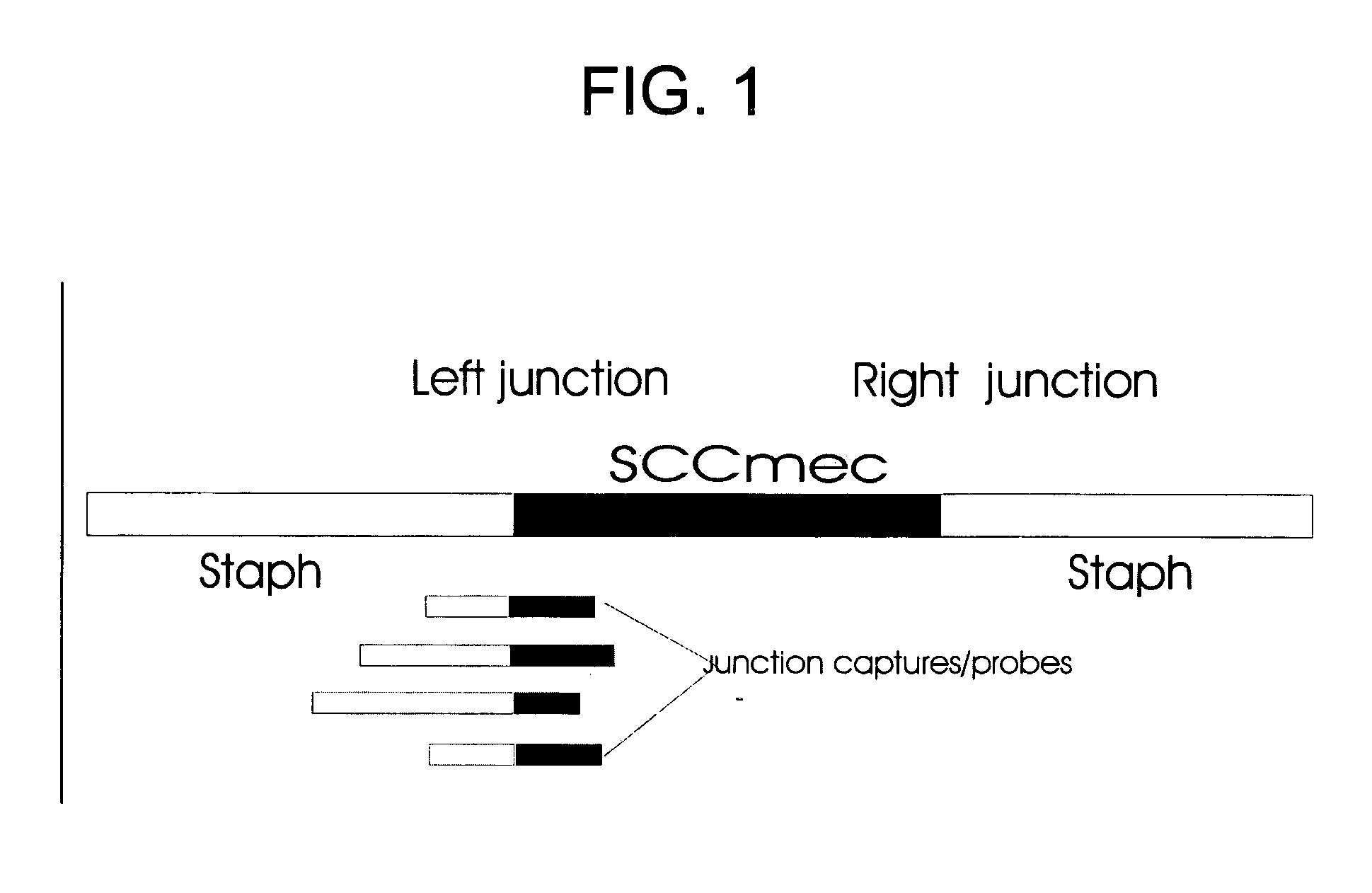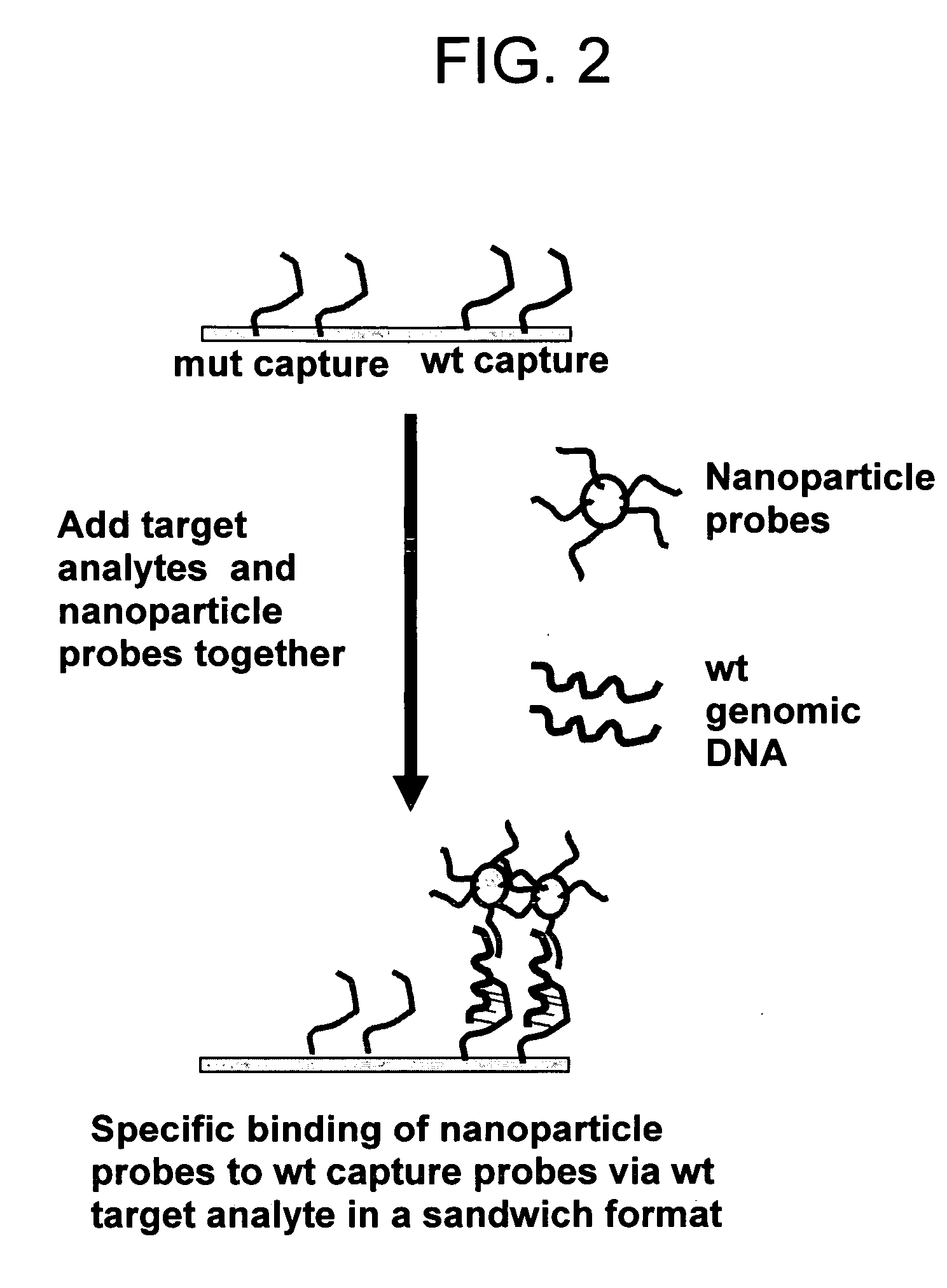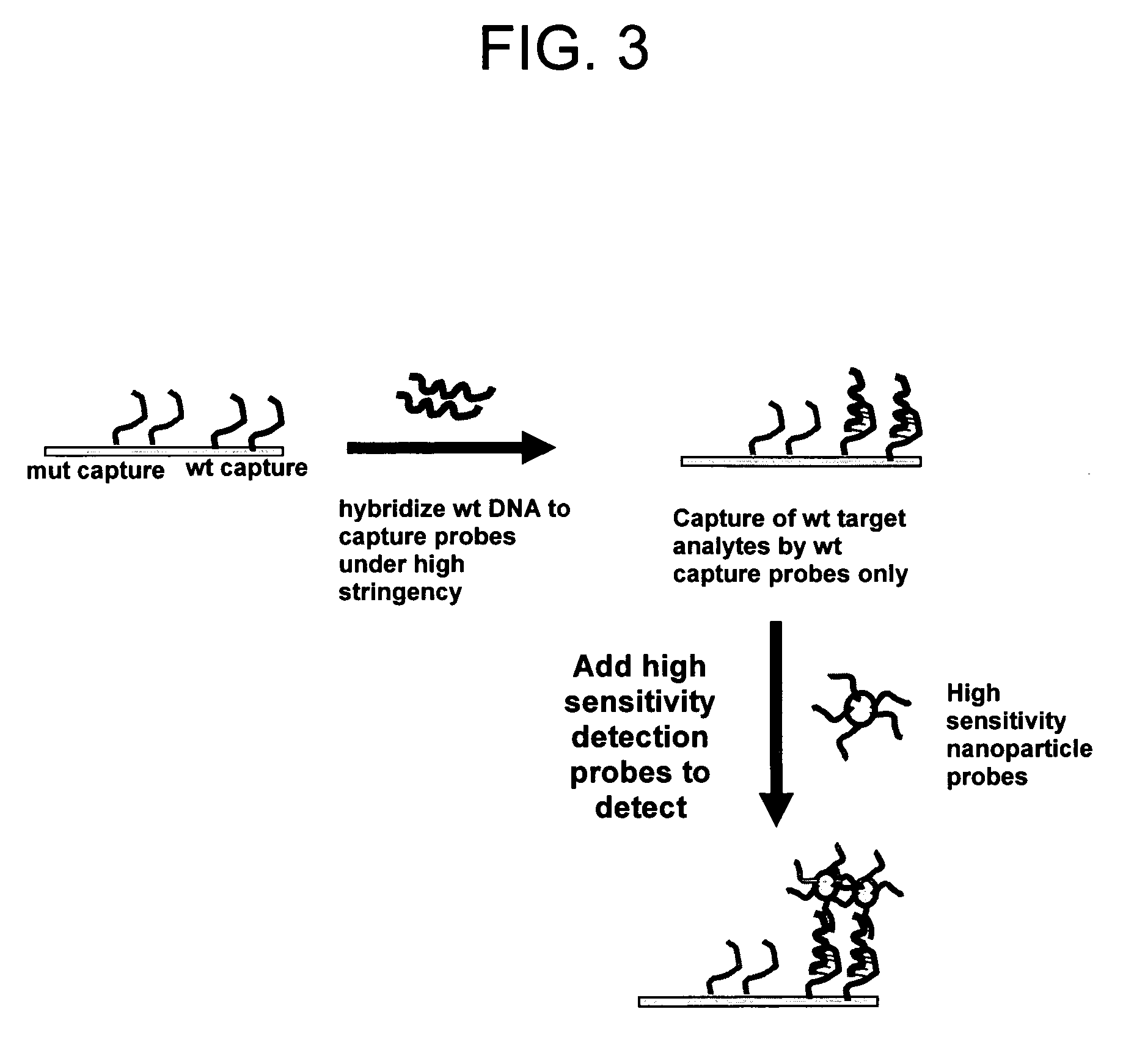Method for distinguishing methicillin resistant S. aureus from methicillin sensitive S. aureus in a mixed culture
- Summary
- Abstract
- Description
- Claims
- Application Information
AI Technical Summary
Benefits of technology
Problems solved by technology
Method used
Image
Examples
example 1
Single-Step and Two-Step Hybridization Methods for Identifying SNPs in Unamplified Genomic DNA Using Nanoparticle Probes
[0108] Gold nanoparticle-oligonucleotide probes to detect the target methicillin resistant Staphylococcus aureus (MRSA) sequences were prepared using procedures described in PCT / US97 / 12783, filed Jul. 21, 1997; PCT / US00 / 17507, filed Jun. 26, 2000; PCT / US01 / 01190, filed Jan. 12, 2001, which are incorporated by reference in their entirety. FIG. 4 illustrates conceptually the use of gold nanoparticle probes having oligonucleotides bound thereto for detection of target DNA using a DNA microarray having MRSA (methicillin resistant staph aureus) or MSSA (methicillin sensitive staph aureus) capture probe oligonucleotides. The sequence of the oligonucleotides bound to the nanoparticles are complementary to one portion of the sequence of target while the sequence of the capture oligonucleotides bound to the substrate are complementary to another portion of the target sequ...
example 2
Detection of MRSA from Bacterial Genomic DNA with Gold Nanoparticle Probes
[0117] In this Example, a method for detecting MRSA sequences using gold nanoparticle-based detection in an array format is described. Microarray plates having oligonucleotide capture probes shown in Table 1 were used along with gold nanoparticles labeled with oligonucleotides detection probes shown in Table 1. The microarray plates, capture probes, and detection probes were prepared as described in Example 1.
[0118] (a) Target DNA Preparation
[0119] Twenty-nine methicillin resistant coagulase negative (CoNS) and 19 S. aureus samples were received as swabs from Evanston Northwestern Healthcare Hospital, Evanston Hospital, Evanston, Ill. 60201. The swabs were used to inoculate a 2 ml tube of Tryptic Soy Broth (TSB) that was grown overnight at 37° C.
[0120] A loopful of the overnight culture was streaked out on (a) 5% Sheep's Blood Agar plates for individual colony growth, as well as (b) on a quadrant of a Man...
PUM
| Property | Measurement | Unit |
|---|---|---|
| Fraction | aaaaa | aaaaa |
| Electrical conductivity | aaaaa | aaaaa |
| Electrical resistance | aaaaa | aaaaa |
Abstract
Description
Claims
Application Information
 Login to View More
Login to View More - R&D
- Intellectual Property
- Life Sciences
- Materials
- Tech Scout
- Unparalleled Data Quality
- Higher Quality Content
- 60% Fewer Hallucinations
Browse by: Latest US Patents, China's latest patents, Technical Efficacy Thesaurus, Application Domain, Technology Topic, Popular Technical Reports.
© 2025 PatSnap. All rights reserved.Legal|Privacy policy|Modern Slavery Act Transparency Statement|Sitemap|About US| Contact US: help@patsnap.com



